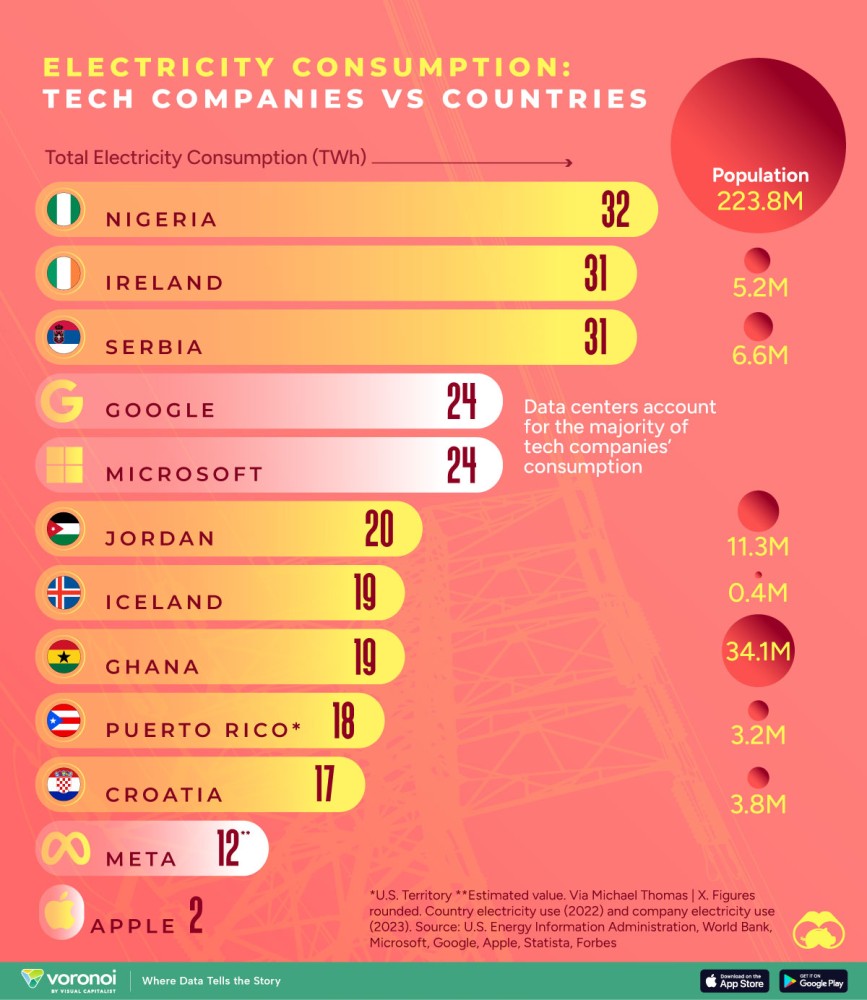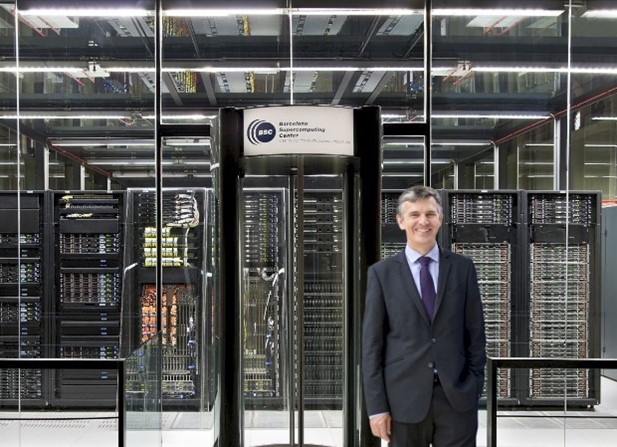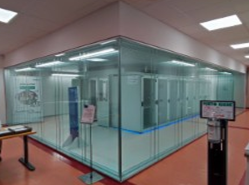Did you know that Big Tech Companies with large Data Centers can consume more electricity than certain countries?

In 2023 the energy consumption of Google and Microsoft was equivalent to 20% of the Spanish electricity demand (244.66 TWh), but the biggest challenge is yet to come, if we bear in mind that on average, a ChatGPT query needs nearly 10 times as much electricity to process as a Google search!
In that difference lies a coming sea change in how the US, Europe, and the world at large will consume power — and how much that will cost.
For years, data centers displayed a remarkably stable appetite for power, even as their workloads mounted. Now, as the pace of efficiency gains in electricity use slows and the AI revolution gathers steam, Goldman Sachs Research estimates that data center power demand will grow 160% by 2030.
At present, data centers worldwide consume 1-2% of overall power, but this percentage will likely rise to 3-4% by the end of the decade, reaching 146.2 Terawatt hours (TWh) by 2027 with AI workloads consuming a growing portion of total data center electricity use. Along the way, the carbon dioxide emissions of datacenters may more than double between 2022 and 2030.
Going forward, between 2023 and 2033, thanks to both the expansion of data centers and an acceleration of electrification, Europe’s power demand could grow by 40% and perhaps even 50%, according to Goldman Sachs Research. At the moment, around 15% of the world’s data centers are located in Europe. By 2030, the power needs of these data centers will match the current total consumption of Portugal, Greece, and the Netherlands combined!
Cooling is a crucial aspect of data center operation and it significantly contributes to their electricity consumption (about 40%).
In this context the EU-project, DYMAN, moves forward with dynamic management of self-cooled HPC data centers.
DYMAN is a 3-year EIC Pathfinder Challenges project that brings together 10 partners: 6 SMEs, 1 public university, 1 research and technology organisation, and 2 non-profit organisations from 4 European countries (Spain, Germany, Italy, and Belgium).
This diversity, in terms of organisation types and geographic location, ensures that project results will reach different communities and countries and can contribute complementary views and approaches. At the Building Digital Twin Association, we’re proud the be part of this consortium.
The aim is to develop a completely new design for energy efficient adsorption chillers that are dynamically managed in data centers.
During July and October 2024 the first two pilots of the DYMAN project were visited by BDTA in order to prepare their Digital Twins.
Great work was done at BSC, Barcelona Supercomputing Center and the HPC4AI of University of Torino.
The BDTA will develop a methodology and a standardization procedure for SIMBOTs, looking to speed up the process of creating functional Digital Twins and more trustable system operation.


